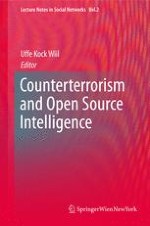2011 | OriginalPaper | Buchkapitel
Detection of Illegitimate Emails Using Boosting Algorithm
verfasst von : Sarwat Nizamani, Nasrullah Memon, Uffe Kock Wiil
Erschienen in: Counterterrorism and Open Source Intelligence
Verlag: Springer Vienna
Aktivieren Sie unsere intelligente Suche, um passende Fachinhalte oder Patente zu finden.
Wählen Sie Textabschnitte aus um mit Künstlicher Intelligenz passenden Patente zu finden. powered by
Markieren Sie Textabschnitte, um KI-gestützt weitere passende Inhalte zu finden. powered by
